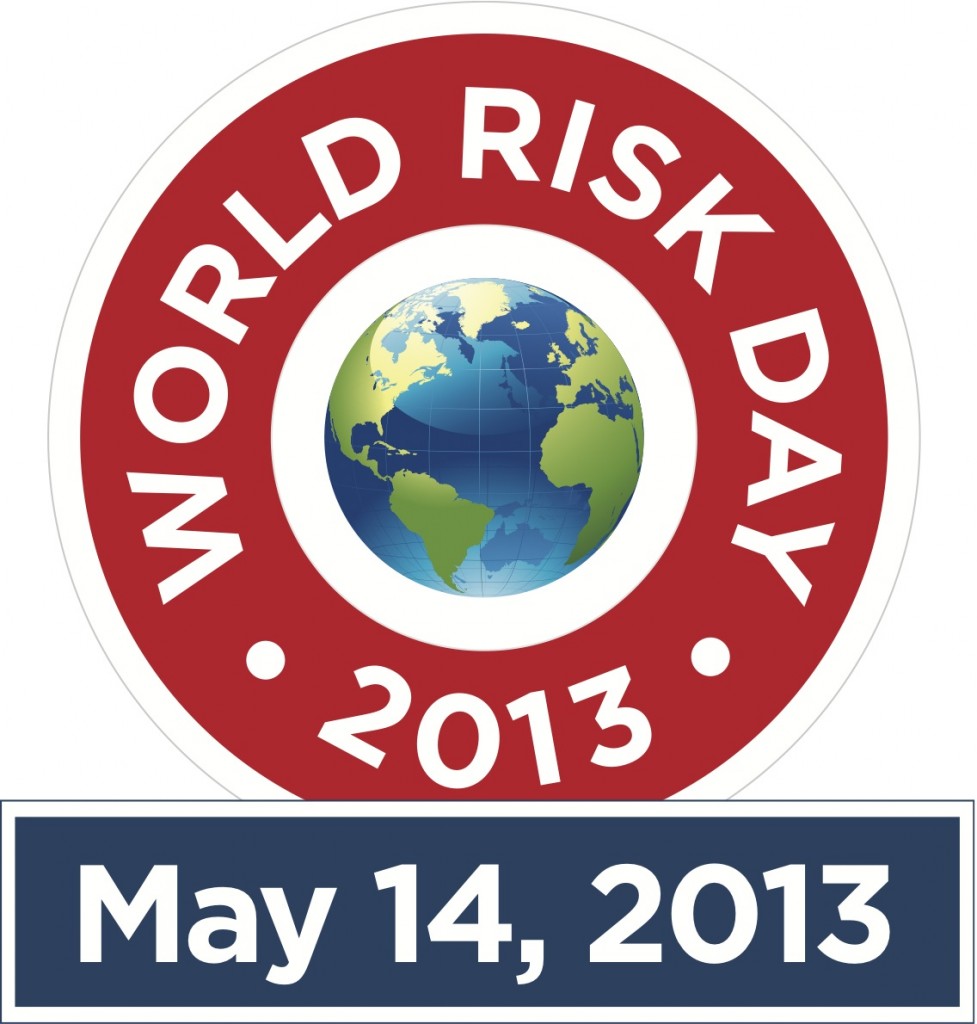Jeff Hearn, managing director of International Finance Facility, talks about the rising interest in treasury risk management training and how companies are shifting their thinking in terms of using hedging strategies to manage treasure risk.
World Risk Day 2013
May 14, 2013, marks the annual event known as World Risk Day. In its second year, the event aims to bring together industry thought leaders and peers to gather together virtually to discuss the major trends, challenges and best practices in risk management. This year’s WRD is themed “Shattering the Project Myth.”
World Risk Day is open to anyone who wants to learn how taking smarter risks can drive their business. The official website includes:
- Virtual Summit: The centerpiece of the first annual World Risk Day, the virtual summit will bring together a unique program of global risk thought leaders who will share
- Resource Center: Visitors can access reports and whitepapers on all aspects of risk management, from embedding a risk management culture to managing risk in government.
- Blog: The World Risk Day blog offers commentary on the event and risk management issues in general and encourages readers to share their experiences and opinions.
- Newsroom: Offers coverage of press releases, supporter announcements and media coverage.
Some of the speakers include:
- Lieutenant Barry McNally, Lieutenant Commander Steve Lee, The Royal Navy – “Making the business case for risk management”
- Norman Anderson, President & CEO, CG/LA Infrastructure – “What lessons can be learned from the world’s Top 100 infrastructure projects?”
- Christoph Schwager, Chief Risk Officer, EADS – “Developing a holistic approach to risk management”
- Rob Halstead, Head of Risk Management, Crossrail — “Strategies for successful collaborative risk management with contractors and the supply chain”
- Chris Bell, Chief Marketing Officer, Active Risk – “Shattering the project myth – managing cost and schedule alone doesn’t equal project success”
- Michael Lopez, Senior Associate, Booz Allen Hamilton – “What makes a great risk manager and how can risk and project professionals collaborate more effectively?”
- David Hillson, The Risk Doctor – “New concepts in understanding and managing risk in projects”
This free, open-to-all event is sure to be a learning day. If you can’t dial in, we’ll have a recap here on the Monitor.
The First Step to Retaining Top Talent: Don’t Annoy Your Employees
One of the biggest business risks of the coming years and decades will be hiring and — more importantly — retaining top talent. Legions of Baby Boomers are heading out to pasture every day, taking an untold wealth of knowledge with them, so those companies that can get the best of the best from the younger generations will be poised to leapfrog the laggards in their industries.
While most consultants tell organizations to focus on the perks, policies, benefits and workplace atmosphere that will attract the brightest, what about the negative side? What are the aspects of a company’s workplace that deter employees from sticking around?
When it comes to the big issues, my guess is that pay, horrible bosses, uninspiring environments and too much work must rank high on most people’s lists. The people I know anyway.
What about the little things though?
The Institute of Leadership and Management in London took a scientific approach to find out, polling nearly 2,200 managers to determine the most-common annoyances of office workers.
Jargon, poor time management and employees coming to work sick (so-called “presenteeism”) rate highly. And as expected, workers being tardy to work and meetings came in as the number-one irritant of managers.
Guilty as charged on that one, I’m afraid. Sorry co-workers.
Another thing many people hate is a hate I share, however: Trying to use email for everything.
Now, look, I hate talking on the phone, too. It’s the worst. If you’re trying to call me to ask me what time I can meet you for coffee, that’s annoying. And please don’t leave me a voicemail unless your house is on fire. Text or send and email, please. I have things to do, and your accent is not as charming as you think, Ms. South Carolina.
But if you need to discuss the start of a new project, particularly if it’s not some old-hat procedure that we’re both familiar with, then, yeah, pick up the phone. Better yet: If we work in the same office, would you please just walk over to my desk for a chat? It’s really not that far. And it’s just so much more useful. Not everything can be done by email.
That said, this is what makes managing a workforce so difficult.
Some people care deeply about certain issues while others don’t even notice them. Then those not-noticing people have annoyances that don’t rank with person C. And so forth and so on forever.
All this illustrates the incredible difficulty of managing the modern employee.
It’s hard to make everyone happy.
But there is great risk in not even trying. You can’t please all of the people all of the time, they say, but as the race for talent becomes increasingly competitive, companies should be attempting to keep as many of them as happy as possible.
If you don’t, your competitor will.
Ed Hochuli Negotiates with the Big Boys
In a colorful presentation at RIMS 2013 in Los Angeles last week, NFL referee and attorney Ed Hochuli shared his secrets of successful negotiations gleaned from decades on the gridiron and in the courtroom. Accompanied by film clips showing him flubbing on-field instructions and being berated by coaches, Hochuli pointed out that there are two types of negotiators. Understanding the strengths and weaknesses of each is how you win the negotiation.
The aggressive type, he explained, are “always on the push.”
They use intimidation, threats, claims of superiority and cast blame on their opponents in an effort to get their way. Aggressive negotiators will make extreme demands and few concessions. While these types will rarely get taken advantage of, they tend to create a feeling of mistrust and are, more often than not, unsuccessful — 75% receive poor results, Hochuli said. Cases take longer to resolve and end up going to trial at twice the rate of other cases.
Cooperative negotiators, on the other hand, try to find agreement and move toward their opponents.
They generally establish credibility and good faith by presenting themselves as trustworthy and fair.
They are willing to make concessions in an effort to reach the best outcome for both parties. This strategy results in more success and easier settlements, as both parties tend to feel like they’re getting something out of the deal. Of course, this strategy runs the risk of exploitation, especially by an aggressive opponent who considers a cooperative opponent to be weak.
But Hochuli pointed out that this can still work as long as the cooperative party understands what is happening and doesn’t get rattled.
Hochuli’s final bit of advice for successful negotiation was simple: Make the first offer.
He demonstrated how starting with a low number in a discussion anchors the conversation to that range and can allow you to set the tone for settlement at an appropriate level for your company. It gives the opponent a better idea of what a claim is worth. Or at least what a company is willing to pay.
And when you’re negotiating with, say, the NFL about ending last year’s referee lockout, this is probably good information to have.


